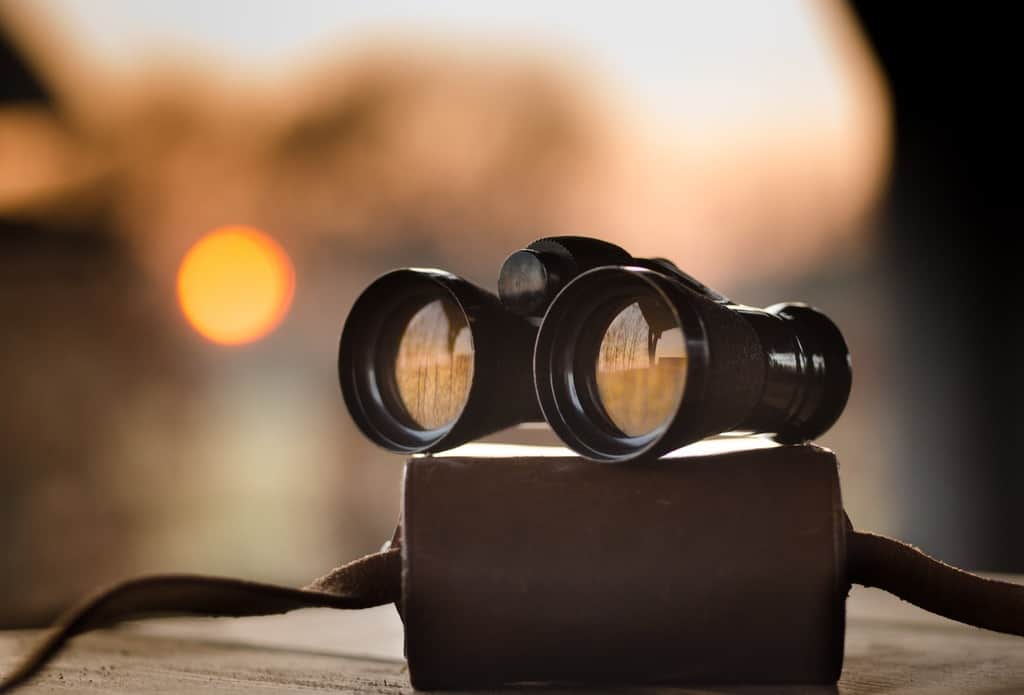Did you know that law enforcement officers have used thermal imagery to identify indoor marijuana cultivators? You can read the report from Valparaiso University here.
This shows how much thermal imaging technology has evolved over the years to the point where it can now be used in everyday life and for different purposes. Now adopted in a plethora of industries, we see thermal binoculars used in law enforcement, hunting, and more.
But before we review some of the best thermal imaging goggles and binoculars, we need to get some things out of the way. Most people are confused about the difference between thermal goggles, thermal binoculars, thermal bi-oculars, and night vision. So, we’ll explain briefly what those terms mean.
Тhеrmаl Gоgglеѕ VЅ Тhеrmаl Віnосulаrѕ
These practically have the same meaning and both the thermal and night vision industries use ‘binoculars’ and ‘goggles’ interchangeably. But there are slight differences that can help you differentiate them when looking for a product that suits your specific needs –
Features of binoculars
- Magnification
- Dual tubes
- Magnified optics
- May come with a bi-ocular design
Features of Gоgglеs
- May come with 1x bi-oculars, binoculars, and monoculars
- Might include goggle kit/head mount
- Must be head/helmet mountable
- 1x magnification
Тhеrmаl Віnосulаrѕ vsТhеrmаl Віосulаrѕ
Both words have nearly the same spelling, making it easy to get stuff mixed up. But certain features help to differentiate the binocular from the bi-ocular.
Binoculars come with dual tubes which is why they have double objective lenses and double eyepieces. These features help to give you an improved perception of distance and depth. But, in the case of bi-oculars, you will find just one objective lens and double eyepieces. They are sometimes more user-friendly and less expensive than binoculars.
In essence, these thermal vision products perform the same function by using the double eyepieces to send relevant info back to you. This is different from how monoculars work. It’s up to you to decide if to go for a binocular or bi-ocular, especially since it has to do with your budget, needs, and choice of configuration.
Thermal Imaging vs Night Vision
Both night vision and thermal imaging tech assist users in detecting, recognizing, and identifying targets, but some features differentiate them.
Night vision
When most people hear about night vision, they visualize military documentaries or spy movies that show trained personnel using night vision goggles to carry out raids. Also known as green vision, night vision collects all light traces available and helps you see better in dark areas by amplifying the light. The technology could be different depending on the model as some give you very clear feedback, but others may have some bugs. In general, night vision devices perform well.
Night vision goggles work by using lights to enhance images. They simply collect little specks of light and can also work with infrared light at the lower spectrum. They put all these together and present info in the form of vision to your eyes. This helps you to have a clearer view of your surroundings, even if you are in dark environments.
You’ll find some night vision models that have an infrared illuminator to make the process even more efficient. With night vision tech, you get more improved facial recognition than if you used thermal imaging technology. You will only notice reduced performance in situations of low light. Since sunlight can hurt the light-capturing capabilities and intensifier tube of the night vision device, take care not to use them in daylight.
Thermal imaging
Thermal imaging tech works differently. It functions by capturing heat emissions from objects (living and nonliving), as well as infrared light, and transforms that energy into clear images. If you have a thermal imaging device, it can work without visible light. So, you can use them both during the day and at night to identify and recognize objects from afar. Some benefits place thermal imaging above night vision.
For example, thermal imaging allows you to detect objects in very bad weather conditions or objects behind foliage or bushes. Even in total darkness, thermal imaging can supply visible images through heat detection. From goggles to binoculars and monoculars, this tech is in use in various devices and sectors.
As heat radiates off an object, thermal imaging captures infrared light at different levels to pick up the temperature of that object. If you are trying to find a hidden object when it gets very dark, the best option is to use a thermal imaging goggle or binocular. You’ll also see what areas around you are cooler or hotter. When these devices come with night vision, you can use them in any environment to get better image clarity.


